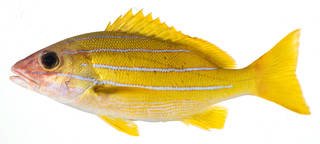
Our fishing charters
-
Our most adventurous tour, our First Light, First Bite is for those who come out fishing who really want to catch. This 6 hour tour starts dark and early, departing the harbor at 5am to get out to the prime fishing grounds as early as possible. On this trip we will troll, and use live bait as available, as well as specialized lures. Come ready for big adventure, and hope for singing reels!
-
For our Half Day Offshore fishing charter we start the morning by trolling out to offshore waters. We target offshore pelagic species by trolling through grounds that have a higher chance of holding the larger species such as ono, mahimahi, ahi, and marlin.
-
For our inshore light-tackle bottom fishing we focus on shallower depths where some of the best-eating fish in the islands are found. This trip is highly versatile and can be perfect for the saltiest angler to anyone new to the reel. Wahine Koa offers ample deck space and the stability to have fun along with providing comfort on our bottom fishing charters!
What we catch: Pelagic (deep sea) fish
-

Mahi Mahi
(10 – 60 lbs. Year round, though most abundant from May-September)
“The fish so nice, they named it twice.” Mahi mahi, also known as dorado or dolphin, are one of the most predominant game fish wherever you go due to their quick and prolific spawning. They are voracious eaters and offer a fun fight, acrobatics, enticing coloration, and are delicious to boot. They grow incredibly quickly, only reaching a maximum age of approximately 4 years old.
-

Marlin
(100 – 1,000 + lbs. More common in the summer)
Perhaps one of the most well-known and respected fish to sport fishing, marlin are apex predators in the ocean. Reaching over 1000lbs, these elusive fish are hard to find and even more of a challenge to catch. With their sword-like bills, they slash their prey to death, making them awe-inspiring to witness, let alone catch. These fish are historically well-known in sport fishing for their incredible aerial displays, unbeatable strength, and mind boggling speed.
-

Ono
(15 – 60 lbs. Year round, though most abundant May-October)
Ono, or wahoo, are the cheetahs of the sea. These fish can reach speeds of up to 50mph, and use their numerous sharp and serrated teeth to slash through their prey. Their torpedo-like shape lends itself to their speed and lightning-quick strikes. The name “Ono” means delicious in Hawaiian, and they live up to the name.
-

Ahi
(30 – 300 lbs. Year round, most abundant March-October)
Ahi, or yellowfin tuna, are strong and incredibly hydrodynamic fish. They are known for their beautiful ruby red flesh and an incredible fight. Their Hawaiian name “ahi” means fire, and refers towhen Hawaiians were fishing from their outriggers and the line would run out so fast that sometimes the friction against the canoe would cause smoke! Locally, any yellowfin under 100lbs is called a “shibi” while those weighing over 100lbs are referred to as ahi.
What we catch: bottom fishing
-

Uku
Uku, common name blue-green snapper, are one of the many delicious fish caught bottom fishing. They are between 4 and 18 pounds, and are well-known for their delicate but firm flesh. These fish are caught year-round, but are more common from May to July.
-
Opakapaka
Also known as the Hawaiian pink snapper, Opakapaka are well-known and prized for their firm yet delicate flesh. They are commonly caught from 180 to 600 feet, and weigh between 1 and 18 pounds, and can be prepared in a variety of ways.
-

Ulua/Papio
Ulua are the top predators on the reef, also known as giant trevally. These fish are the largest of the jack fish, and are known as a premium game fish, as well as good eating. They can grow up to 150 pounds or larger, but average closer to 5-20. These voracious predators are highly respected and sought after.
-

Nabeta
Nabeta are a deep water parrotfish that are a specialty in Hawaii. They have succulent flesh, and are especially good steamed. These fish are less well-known on the market, because fishermen tend to keep them or share with friends.
-

Ta'ape
The Ta’ape is a type of snapper that is actually invasive to Hawai`i. Introduced in the 50s from Australia, this little striped fish is not only one of the brightest fish we might catch on our light tackle charters, it’s also among the most sustainable fish to eat when you’re in the islands.
